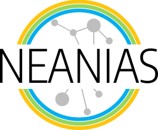The work “The virtual observatory ecosystem facing the European Open Science Cloud“, with the support of NEANIAS project, has been published in HAL.
- Authors: Marco Molinaro [1] , Mark Allen [2], Françoise Genova [2], André Schaaff [2] , Margarida Castro Neves [3] , Markus Demleitner [3] , Sara Bertocco [1], Dave Morris [4] , François Bonnarel [2] , Stelios Voutsinas [4] , Catherine Boisson [5] , and Giuliano Taffoni [1]
- Affiliations: [1] INAF - Osservatorio Astronomico di Trieste, via G.B. Tiepolo 11, 34143 Trieste, Italy [2] CNRS - Centre de Donn´ees astronomiques de Strasbourg, Strasbourg, France [3 ]Universit¨at Heidelberg, Astronomisches Rechen Institut, Heidelberg, Germany [4] University od Edinburgh, Edinburgh, Scotland, UK [5] Observatoire de Paris - Meudon, Paris, France.
Abstract
The International Virtual Observatory Alliance (IVOA) has developed and built, in the last two decades, an ecosystem of distributed resources, interoperable and based upon open shared technological standards. In doing so the IVOA has anticipated, putting into practice for the astrophysical domain, the ideas of FAIR-ness of data and service resources and the Open-ness of sharing scientific results, leveraging on the underlying open standards required to fill the above. In Europe, efforts in supporting and developing the ecosystem proposed by the IVOA specifications has been provided by a continuous set of EU funded projects up to current H2020 ESCAPE ESFRI cluster. In the meantime, in the last years, Europe has realised the importance of promoting the Open Science approach for the research communities and started the European Open Science Cloud (EOSC) project to create a distributed environment for research data, services and communities. In this framework the European VO community, had to face the move from the interoperability scenario in the astrophysics domain into a larger audience perspective that includes a cross-domain FAIR approach. Within the ESCAPE project the CEVO Work Package (Connecting ESFRI to EOSC through the VO) has one task to deal with this integration challenge: a challenge where an existing, mature, distributed e-infrastructure has to be matched to a forming, more general architecture. CEVO started its works in the first months of 2019 and has already worked on the integration of the VO Registry into the EOSC e-infrastructure. This contribution reports on the first year and a half of integration activities, that involve applications, services and resources being aware of the VO scenario and compatible with the EOSC architecture.
Acknowledgments
ESCAPE – the European Science Cluster of Astronomy & Particle Physics ESFRI Research Infrastructures – has received funding from the European Union’s Horizon 2020 research and innovation programme under the Grant Agreement n. 824064. MM acknowledges contacts and collaboration with the H2020 NEANIAS project in the person of Eva Sciacca. MM, SB & GT acknowledge the computing centre of the INAF – Osservatorio Astronomico di Trieste.
Keywords
Virtual Observatory, European Open Science Cloud, Interoperability, Distributed e-Infrastructures, FAIR principles, Open Science
All the details:
Marco Molinaro, M Allen, Françoise Genova, André Schaaff, Margarida Castro Neves, et al.. The Virtual Observatory ecosystem facing the European Open Science Cloud. Observatory Operations: Strategies, Processes, and Systems VIII, Dec 2020, Online Only, France. pp.74, ff10.1117/12.2562322ff. ffhal-03377029f
Get the work at https://hal.archives-ouvertes.fr/hal-03377029/document
